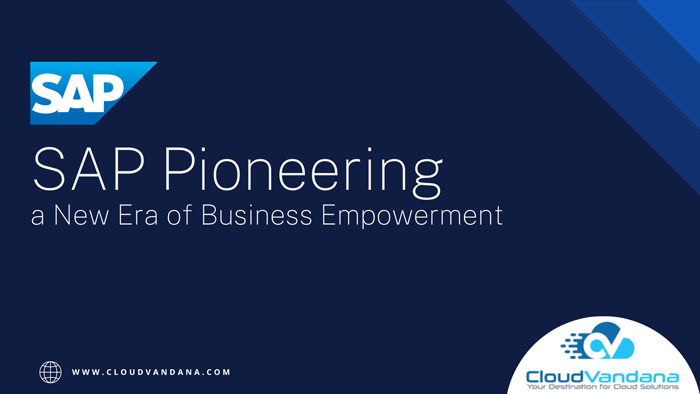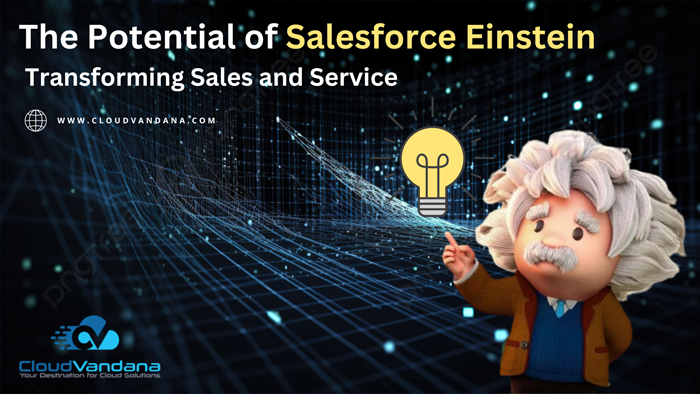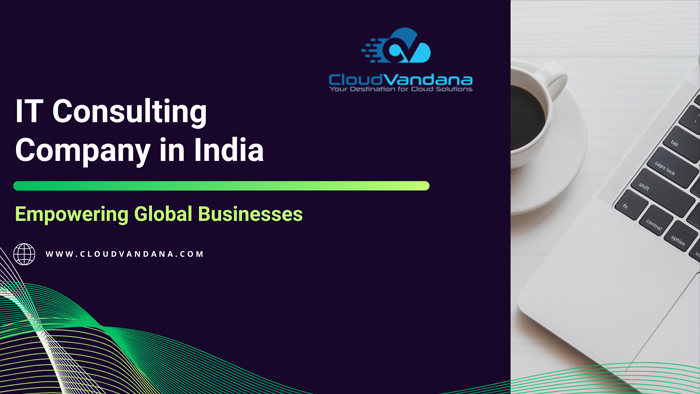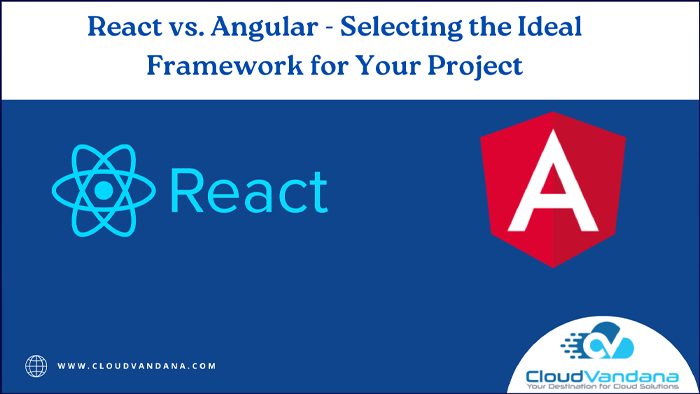Salesforce Test Automation-Enhancing Efficiency and Quality

Transform your testing process with Salesforce Test Automation. Increase reliability, streamline workflows, and achieve faster deployments with tailored solutions to maximize efficiency and performance. In today’s fast-paced digital landscape, businesses rely heavily on Customer Relationship Management (CRM) systems like Salesforce to manage customer data, streamline processes, and drive revenue. As Salesforce implementations become increasingly complex and customizable, ensuring the stability and reliability of these systems is paramount. This is where test automation emerges as a game-changer, empowering organizations to validate Salesforce functionality efficiently and effectively while minimizing manual effort and human error. Understanding Salesforce Testing Salesforce testing involves verifying the applications’ functionality, performance, and security to meet business requirements and user expectations. Traditional manual testing methods, although essential, are time-consuming, error-prone, and often unsustainable in agile environments where rapid development cycles are the norm. The Case for Test Automation Test automation offers a compelling solution to the challenges posed by manual testing. Organizations can accelerate testing by leveraging automation tools and frameworks, increasing test coverage, and improving overall software quality. In the context of Salesforce, automation enables teams to: Enhance Efficiency: Automation eliminates the need for repetitive manual testing tasks, allowing QA teams to focus on more strategic activities such as test case design and analysis. Increase Test Coverage: Automated tests can cover various scenarios, including regression testing, integration testing, and performance testing, thereby reducing the risk of undiscovered defects. Facilitate Continuous Integration/Continuous Deployment (CI/CD): Automation integrates seamlessly with CI/CD pipelines, enabling rapid and reliable delivery of Salesforce updates and enhancements. Improve Accuracy and Reliability: Automated tests execute consistently and predictably, reducing the likelihood of human error and ensuring reliable test results. Choosing the Right Automation Framework Selecting the appropriate automation framework is crucial for the success of Salesforce test automation initiatives. Key considerations when evaluating automation frameworks include: Compatibility with Salesforce: The framework should support Salesforce-specific functionalities and APIs to interact with Salesforce objects, fields, and processes. Scalability and Maintainability: The framework should be scalable to accommodate the evolving needs of the organization and maintainable to facilitate easy test script maintenance and updates. Integration Capabilities: The framework should seamlessly integrate with tools and technologies in the testing ecosystem, such as test management systems and CI/CD pipelines. Community Support and Documentation: A vibrant community and comprehensive documentation are essential for troubleshooting issues, sharing best practices, and accelerating the learning curve. Popular automation frameworks for Salesforce testing include Selenium, Salesforce Lightning Testing Service (LTS), and Apex testing frameworks such as ApexUnit and Salesforce DX. Best Practices for Salesforce Test Automation To maximize the benefits of test automation and ensure its effectiveness, organizations should adhere to best practices throughout the automation lifecycle: Define Clear Objectives: Clearly define the goals and objectives of the automation effort, including the scope of automation, target platforms, and desired outcomes. Prioritize Test Cases: Prioritize test cases based on business impact, frequency of use, and risk factors to optimize resource allocation and maximize ROI. Implement Modular Test Design: Adopt a modular approach to test design, where test cases are organized into reusable modules or components to promote scalability and maintainability. Use Data-Driven Testing: Parameterize test data to simulate different scenarios and test conditions, thereby increasing test coverage and uncovering potential edge cases. Implement Version Control: Leverage version control systems such as Git to manage test scripts, track changes, and collaborate effectively across distributed teams. Establish Continuous Integration and Deployment (CI/CD): Integrate automated tests into CI/CD pipelines to enable early detection of defects and accelerate the delivery of high-quality Salesforce applications. Monitor and Analyze Test Results: Monitor test execution results regularly, analyze trends, and identify improvement areas to continuously enhance the automation strategy’s effectiveness. Overcoming Challenges and Pitfalls While test automation offers significant benefits, organizations may encounter challenges and pitfalls. Common challenges include: While test automation offers significant benefits, organizations may encounter challenges and pitfalls. Common challenges include: Dynamic UI Elements: Salesforce applications often feature dynamic UI elements that can be challenging to identify and interact with using traditional automation approaches. Test Data Management: Managing test data effectively across different environments and test scenarios can be complex and time-consuming, leading to data consistency issues and test failures. Flakiness and Fragility: Automated tests may exhibit flakiness and fragility due to environmental factors, timing issues, or changes in application behavior, requiring robust error handling and synchronization mechanisms. Skill and Resource Constraints: Building and maintaining a practical automation framework requires specialized skills and resources, which may be lacking in some organizations. To mitigate these challenges, organizations should invest in comprehensive training programs, leverage automation best practices, and foster a culture of collaboration and knowledge sharing among team members. Conclusion Test automation is a powerful enabler for ensuring the quality, reliability, and performance of Salesforce applications in today’s digital ecosystem. By embracing automation best practices, choosing the proper automation framework, and overcoming common challenges, organizations can unlock the full potential of Salesforce test automation and drive business value through accelerated delivery, enhanced customer satisfaction, and improved software quality. In summary, the journey towards Salesforce test automation has challenges. Still, the rewards are significant for organizations willing to invest the time, effort, and resources to harness its full potential. Through strategic planning, thoughtful execution, and continuous improvement, organizations can transform their Salesforce testing efforts and position themselves for success in an increasingly competitive marketplace. In conclusion, CloudVandana is a distinguished Salesforce partner in India, offering unparalleled expertise and innovative solutions in Salesforce test automation. With a proven track record of delivering excellence, CloudVandana empowers businesses to elevate their Salesforce testing processes to new heights of efficiency and reliability. Call Now. Request a Free Consultation YOU MIGHT ALSO LIKE
A Roadmap to Superior Cross-Platform App Development

Revolutionize your digital presence with our cutting-edge app development solutions. From concept to deployment, our team specializes in creating engaging and user-friendly mobile applications across platforms. Elevate your brand with our innovative approach to app development. Let’s bring your vision to life together. In the ever-evolving landscape of mobile technology, creating applications that cater to multiple platforms is becoming increasingly essential. Cross-platform app development emerges as the solution to this dilemma, offering a unified approach to building applications that run seamlessly across various devices and operating systems. Understanding Cross-Platform App Development Cross-platform app development refers to creating mobile applications that can be deployed on multiple platforms with minimal modifications. Unlike traditional methods where separate codebases are required for different platforms (e.g., iOS, Android, web), cross-platform development utilizes frameworks and tools that allow developers to write code once and deploy it across various platforms. Key Components of Cross-Platform Development: Frameworks and Tools: Cross-platform development is facilitated by frameworks and tools that enable developers to write code using a single codebase. Popular frameworks include React Native, Xamarin, Flutter, and Ionic, each offering unique features and capabilities. Code Reusability: One of the primary advantages of cross-platform development is code reusability. Developers can write code once and use it across multiple platforms, significantly reducing development time and effort. Native Performance: While cross-platform apps are built using shared code, they can achieve native-like performance through platform-specific optimizations and native components. UI/UX Consistency: Cross-platform frameworks often provide tools and components for creating consistent user interfaces and experiences across different platforms, ensuring a seamless user experience regardless of the device or operating system. Advantages of Cross-Platform App Development Cross-platform app development offers several benefits that make it an attractive choice for developers and businesses alike: 1. Cost Efficiency: By utilizing a single codebase, developers can significantly reduce development costs associated with building separate applications for each platform. Maintenance and updates also become more streamlined as changes can simultaneously be implemented across all platforms. 2. Faster Time-to-Market: Cross-platform development enables faster development cycles since developers can write code once and deploy it across multiple platforms. This accelerated development process allows businesses to bring their products to market more quickly, gaining a competitive edge in the rapidly evolving app market. 3. Wider Reach: Cross-platform apps can reach a broader audience by targeting multiple platforms simultaneously, maximizing their potential user base and market penetration. This approach is particularly advantageous for startups and businesses looking to expand their reach without investing in separate development efforts for each platform. 4. Simplified Maintenance: With a single codebase, maintenance and updates become more straightforward, as developers can simultaneously address issues and implement changes across all platforms. This streamlines the maintenance process and ensures consistency across different app versions. 5. Access to Native Features: Cross-platform frameworks provide access to native device features and APIs, allowing developers to leverage platform-specific capabilities without sacrificing code reusability. This enables developers to create feature-rich applications that harness the full potential of each platform. Challenges and Considerations While cross-platform development offers numerous advantages, it also presents certain challenges and considerations that developers must address: 1. Performance Optimization: Achieving optimal performance across multiple platforms requires careful optimization and platform-specific adjustments. Developers must leverage platform-specific APIs and optimizations to ensure the app performs well on each target platform. 2. Platform Limitations: Each platform has its own set of guidelines, limitations, and design principles that developers must adhere to. Ensuring compatibility and compliance with platform-specific requirements can be challenging and may require additional effort during development. 3. Tool and Framework Selection: Choosing the proper cross-platform framework and tools is critical to the project’s success. Developers must evaluate factors such as performance, features, community support, and development experience when selecting a framework for their project. 4. User Experience: Maintaining a consistent and intuitive user experience across different platforms can be challenging. Developers must carefully design and test the application to ensure a seamless user experience on all supported devices and operating systems. Best Practices for Cross-Platform Development To maximize the benefits of cross-platform app development, developers should adhere to the following best practices: Optimize Performance: Implement platform-specific optimizations and leverage native features to achieve optimal performance across all platforms. Design for Consistency: Maintain a consistent user interface and experience across different platforms, adhering to platform-specific design guidelines and principles. Test Across Platforms: Conduct thorough testing across various devices and operating systems to identify and address platform-specific issues and discrepancies. Modularize Code: Organize code into modular components to promote code reusability and maintainability across multiple platforms. Stay Updated: Stay abreast of platform updates, new features, and best practices to ensure compatibility and compliance with the latest platform requirements. Community Engagement: Leverage community forums, documentation, and resources provided by cross-platform frameworks to seek assistance, share knowledge, and stay informed about best practices and developments in the field. Conclusion Cross-platform app development offers a compelling solution for building applications that run seamlessly across multiple platforms. By leveraging frameworks, tools, and best practices, developers can create feature-rich, high-performance applications while minimizing development costs and time-to-market. Performance optimization and platform limitations can be overcome through careful planning, optimization, and adherence to best practices. With the evolution of cross-platform development tools and technologies, the future holds even more significant potential for creating innovative, cross-platform applications that delight users across diverse devices and operating systems. CloudVandana offers a comprehensive roadmap to superior cross-platform app development, empowering businesses to thrive in the dynamic digital landscape. By harnessing the latest technologies and adhering to industry best practices, we ensure your app meets and exceeds user expectations across diverse platforms. Our commitment to innovation and a customer-centric approach guarantees solutions that resonate with your audience and drive tangible results. Call Now. Request a Free Consultation YOU MIGHT ALSO LIKE
SAP: Pioneering a New Era of Business Empowerment and Efficiency

In today’s fast-paced global economy, SAP (Systems, Applications, and Products in Data Processing) stands out as a pioneering force, reshaping the landscape of enterprise resource planning (ERP) and business software solutions. With its comprehensive suite of applications, SAP empowers organizations to achieve unparalleled efficiency, agility, and innovation across diverse industry verticals. Understanding SAP: A Holistic Approach to Business Management At its core, SAP represents more than just a software platform; it embodies a philosophy of integrated business management. From finance and human resources to supply chain and customer relationship management, SAP offers a suite of interconnected modules to facilitate seamless data flow and decision-making. 1. ERP Excellence: At the heart of SAP’s offerings lies its ERP system, a robust framework that centralizes core business processes, including procurement, manufacturing, sales, and financial management. By consolidating disparate functions into a unified platform, SAP ERP enables real-time visibility into critical operations, fostering data-driven insights and informed decision-making. 2. Innovation Through Integration: One of SAP’s distinguishing features is its ability to integrate with external systems and technologies, fostering a collaborative ecosystem that transcends organizational boundaries. Through open APIs and interoperability frameworks, SAP facilitates seamless data exchange with third-party applications, enabling businesses to leverage emerging technologies such as AI, IoT, and blockchain to drive innovation and competitive advantage. 3. Cloud-Centric Capabilities: In response to the growing demand for scalability, flexibility, and cost-efficiency, SAP has embraced a cloud-first approach, offering a comprehensive suite of cloud-based solutions tailored to the needs of modern enterprises. From SAP S/4HANA Cloud to SAP SuccessFactors and SAP Ariba, cloud-based offerings empower organizations to accelerate digital transformation, reduce infrastructure overhead, and adapt to evolving market dynamics with unparalleled agility. Unlocking Value: The Business Benefits of SAP Adoption Adopting SAP yields many tangible benefits that extend across the entire spectrum of business operations. From optimized processes to enhanced collaboration and strategic decision-making, SAP catalyzes organizational excellence and sustainable growth. 1. Operational Efficiency: By streamlining core business processes and eliminating redundant workflows, SAP enables organizations to optimize resource allocation, minimize operational costs, and enhance productivity. Through automation and real-time insights, SAP empowers businesses to identify inefficiencies, mitigate risks, and capitalize on emerging opportunities with precision and agility. 2. Enhanced Visibility and Control: With SAP’s integrated analytics and reporting capabilities, stakeholders gain unparalleled visibility into key performance indicators (KPIs), operational metrics, and market trends. From executive dashboards to granular performance reports, SAP equips decision-makers with the insights needed to drive strategic initiatives, allocate resources effectively, and respond to changing market dynamics confidently and clearly. 3. Customer-Centric Innovation: In an era defined by hyper-connectivity and heightened customer expectations, SAP enables businesses to deliver personalized experiences, anticipate customer needs, and foster long-term loyalty. Through advanced CRM capabilities and predictive analytics, SAP empowers organizations to cultivate deeper customer relationships, anticipate market trends, and tailor products and services to meet evolving demands with precision and relevance. Navigating the Path to SAP Success: Best Practices and Considerations While the benefits of SAP adoption are undeniable, realizing its full potential requires careful planning, strategic alignment, and ongoing investment in people, processes, and technology. To maximize the value of SAP implementation, organizations must embrace a holistic approach that encompasses the following best practices and considerations: 1. Executive Leadership and Sponsorship: Successful SAP initiatives demand unwavering commitment and active involvement from executive leadership. By championing the vision, securing adequate resources, and fostering a culture of innovation and collaboration, senior executives can instill confidence, alignment, and accountability across the organization, paving the way for successful implementation and adoption. 2. Comprehensive Training and Change Management: Effective change management lies at the heart of successful SAP adoption. From end-users to IT professionals and business stakeholders, comprehensive training programs and targeted communication strategies are essential to promote user adoption, mitigate resistance to change, and foster a culture of continuous learning and improvement. By investing in training and support mechanisms, organizations can empower users to leverage SAP’s full capabilities and drive sustained value creation. 3. Agile Implementation Methodologies: In an era of rapid digital transformation, agility and adaptability are paramount. By embracing agile implementation methodologies such as SAP Activate, organizations can accelerate time-to-value, mitigate project risks, and respond to evolving business requirements quickly and precisely. Through iterative development cycles, continuous feedback loops, and cross-functional collaboration, agile methodologies enable organizations to navigate complexity, prioritize value delivery, and achieve tangible outcomes that align with strategic objectives. Looking Ahead: The Future of SAP and Beyond As we look to the future, the evolution of SAP promises to redefine the boundaries of enterprise innovation and digital transformation. From machine learning and predictive analytics to augmented reality and quantum computing, SAP continues to push the envelope of technological possibility, driving unprecedented value and opportunity for businesses worldwide. 1. Intelligent Enterprises: Building upon its foundation of innovation and integration, SAP is poised to usher in a new era of intelligent enterprises powered by AI, automation, and predictive analytics. By harnessing the power of data and machine learning, SAP enables organizations to unlock actionable insights, automate routine tasks, and anticipate customer needs with unparalleled precision and efficiency. 2. Experience-Driven Innovation: In an increasingly digital and interconnected world, the customer experience takes center stage. SAP empowers organizations to deliver immersive, memorable experiences that drive loyalty, advocacy, and sustainable growth through advanced CRM capabilities, omnichannel engagement strategies, and personalized interactions. By putting the customer at the heart of every interaction, SAP enables businesses to differentiate themselves in a crowded marketplace and build a lasting competitive advantage. 3. Ecosystem Collaboration and Co-Innovation: In the spirit of openness and collaboration, SAP continues to expand its ecosystem of partners, developers, and customers, fostering a culture of co-innovation and collective growth. Organizations can access various solutions, services, and best practices designed to accelerate innovation, address industry-specific challenges, and unlock new business opportunities in a rapidly evolving digital landscape through platforms such as SAP App Center and SAP Community. Conclusion: Embracing the Power of SAP for Sustainable Growth In conclusion, SAP represents more than just a software vendor; it embodies a
The Potential of Salesforce Einstein: Transforming Sales and Service

Salesforce Einstein is a beacon of intelligent automation and predictive analytics. With its seamless integration into the Salesforce ecosystem, Einstein empowers organizations to unlock valuable insights, streamline processes, and foster deeper customer connections. In this comprehensive guide, we delve into the transformative capabilities of Salesforce Einstein and explore how it is reshaping the future of sales and service. Understanding Salesforce Einstein: At its core, Salesforce Einstein harnesses the power of artificial intelligence (AI) to deliver personalized experiences, automate mundane tasks, and facilitate data-driven decision-making. Built upon advanced machine learning algorithms, natural language processing, and predictive modeling, Einstein is a virtual data scientist, constantly analyzing vast datasets to extract actionable insights. By leveraging historical patterns, user interactions, and contextual cues, Einstein empowers businesses to anticipate customer needs, identify trends, and proactively engage with prospects. Driving Sales Enablement: In today’s hypercompetitive marketplace, sales teams are under immense pressure to deliver results while navigating complex buyer journeys. Salesforce Einstein revolutionizes sales enablement by arming representatives with real-time intelligence and predictive analytics. Through features like Lead Scoring, Opportunity Insights, and Forecasting, Einstein enables sales professionals to prioritize high-value prospects, forecast revenue precisely, and identify cross-selling opportunities. By automating routine tasks and surfacing relevant recommendations, Einstein empowers sales teams to focus their efforts where they matter most, ultimately driving higher conversions and revenue growth. Enhancing Customer Service: Exceptional customer service has become a cornerstone of business success, with consumers demanding personalized support and swift resolutions. Salesforce Einstein elevates service excellence by revolutionizing how organizations interact with their customers. With Einstein Bots, companies can deploy intelligent chatbots that handle routine inquiries, troubleshoot issues, and escalate complex cases to human agents seamlessly. Einstein Bots deliver tailored responses and foster meaningful engagements across multiple channels by harnessing natural language understanding and sentiment analysis. Moreover, Einstein Case Classification categorizes incoming service requests, enabling agents to prioritize urgent issues and deliver proactive resolutions that delight customers. Optimizing Marketing Campaigns: In the age of digital marketing, relevance is paramount, with consumers expecting tailored experiences that resonate with their preferences and behaviors. Salesforce Einstein empowers marketers to craft highly targeted campaigns, optimize messaging, and drive engagement at every touchpoint. With Predictive Lead Scoring, marketers can identify top prospects based on their propensity to convert, enabling more effective segmentation and personalized outreach. Additionally, Einstein Engagement Scoring analyzes customer interactions to gauge their level of engagement and likelihood to respond, enabling marketers to fine-tune their strategies and maximize ROI. Embracing Data-driven Insights: In the era of big data, organizations are inundated with a deluge of information, yet extracting actionable insights remains a formidable challenge. Salesforce Einstein democratizes data intelligence by providing intuitive analytics tools that empower users at every level of the organization. With Einstein Analytics, business users can explore data visually, uncover hidden trends, and easily derive actionable insights. Whether analyzing sales performance, customer churn, or marketing attribution, Einstein Analytics enables stakeholders to make informed decisions, drive strategic initiatives, and adapt to real-time changing market dynamics. Fostering Innovation and Scalability: One of the hallmarks of Salesforce Einstein is its ability to adapt and evolve alongside the evolving needs of businesses. As a native component of the Salesforce platform, Einstein seamlessly integrates with existing workflows, applications, and third-party services, ensuring a frictionless user experience. Moreover, with robust APIs and developer tools, organizations can extend Einstein’s capabilities, customize predictive models, and build AI-driven applications tailored to their specific requirements. Whether automating lead routing, optimizing pricing strategies, or enhancing sentiment analysis, the possibilities with Salesforce Einstein are virtually limitless. Conclusion: In conclusion, Salesforce Einstein represents a paradigm shift in how businesses leverage AI to drive sales, enhance service, and unlock the full potential of their CRM investments. By harnessing the power of predictive analytics, automation, and data-driven insights, Einstein empowers organizations to stay ahead of the competition, delight customers, and foster lasting relationships. As businesses navigate the complexities of the digital age, embracing the transformative capabilities of Salesforce Einstein is not just a competitive advantage but a strategic imperative for long-term success in today’s dynamic marketplace. Are you looking for a reputed Salesforce partner in India? CloudVandana is a leading Salesforce partner in India, renowned for its commitment to innovation, customer satisfaction, and technological expertise. With a dedicated team and comprehensive services, CloudVandana continues to set the standard for excellence in Salesforce implementation and optimization. Positioned at the forefront of technology, CloudVandana empowers businesses to thrive in the digital era through Salesforce Einstein and beyond. Call Now. Request a Free Consultation YOU MIGHT ALSO LIKE
Salesforce Unlimited Edition+: A Game-Changer in CRM Solutions

In the ever-evolving customer relationship management (CRM) landscape, Salesforce has again raised the bar with its latest offering: Salesforce Unlimited Edition+. As businesses increasingly rely on CRM platforms to manage customer interactions, drive sales, and enhance productivity, the introduction of Unlimited Edition+ marks a significant milestone in the industry. With its robust suite of features and capabilities, Unlimited Edition+ promises to revolutionize how organizations engage with their customers, streamline operations, and accelerate growth. In this blog post, we’ll delve into the key features and benefits of Salesforce’s latest offering and explore how it stands to reshape the CRM landscape. The Power of Salesforce Unlimited Edition+ At its core, Unlimited Edition+ embodies Salesforce‘s commitment to innovation and customer-centricity. Building upon the success of its predecessors, Unlimited Edition+ introduces a host of new features and enhancements designed to empower businesses of all sizes to thrive in today’s competitive marketplace. Enhanced Customization and Scalability One of the standout features of Unlimited Edition+ is its unparalleled customization and scalability capabilities. With the ability to tailor the platform to suit specific business needs and workflows, organizations can easily create highly personalized customer experiences while adapting to evolving requirements. From custom fields and objects to advanced automation tools, Unlimited Edition+ allows businesses to mold the platform according to their unique processes and preferences. Whether creating custom reports and dashboards or integrating third-party applications, the possibilities are virtually limitless with Unlimited Edition+. Advanced Analytics and Insights In an era driven by data-driven decision-making, Unlimited Edition+ equips organizations with powerful analytics and insights tools to unlock the full potential of their data. With advanced reporting capabilities and predictive analytics, businesses can gain valuable insights into customer behavior, trends, and opportunities, enabling them to make informed decisions and drive strategic initiatives. By harnessing the power of AI and machine learning, Unlimited Edition+ goes beyond traditional CRM solutions to deliver predictive insights and recommendations that empower sales and marketing teams to anticipate customer needs and preferences proactively. Seamless Integration and Collaboration In today’s interconnected world, seamless integration and collaboration are essential for driving organizational efficiency and productivity. Unlimited Edition+ offers seamless integration with various third-party applications and systems, allowing businesses to centralize their data and workflows for enhanced visibility and control. Whether it’s integrating with popular productivity tools like Microsoft Office 365 and Google Workspace or connecting with industry-specific applications, Unlimited Edition+ enables organizations to break down silos and foster collaboration across departments and teams. Enhanced Security and Compliance With data privacy and security becoming increasingly critical for businesses worldwide, Unlimited Edition+ strongly emphasizes protecting sensitive information and ensuring compliance with regulatory requirements. With robust security features like encryption, access controls, and audit trails, organizations can ensure their data is always safe and secure. Furthermore, Unlimited Edition+ provides built-in compliance tools and features to help businesses adhere to industry regulations and standards, such as GDPR and HIPAA. By prioritizing security and compliance, Salesforce empowers organizations to build trust and confidence with their customers while mitigating the risk of data breaches and compliance violations. Empowering Businesses to Thrive In today’s fast-paced and competitive business environment, success hinges on adapting, innovating, and delivering exceptional customer experiences. With Unlimited Edition+, Salesforce has again demonstrated its commitment to empowering businesses to thrive in the digital age. By combining advanced customization, analytics, integration, and security capabilities, Unlimited Edition+ equips organizations with the tools and insights they need to drive growth, foster innovation, and stay ahead of the competition. Conclusion Salesforce’s launch of Unlimited Edition+ represents a significant milestone in the evolution of CRM solutions. With its unrivaled features, capabilities, and security, Unlimited Edition+ promises to redefine how organizations engage with their customers, streamline operations, and drive success in today’s dynamic business landscape. As businesses embrace digital transformation and prioritize customer-centricity, Unlimited Edition+ emerges as a game-changer that empowers organizations to unlock new opportunities, drive growth, and build lasting customer relationships. In the journey towards digital excellence, Unlimited Edition+ is a testament to Salesforce’s unwavering commitment to innovation, customer success, and driving positive change in the CRM world. As businesses look to the future, the launch of Unlimited Edition+ signals a new era of possibilities and potential where organizations can thrive and succeed in the customer age. CloudVandana stands out as a reputable Salesforce consulting company, offering comprehensive solutions and expert guidance to businesses seeking to leverage the full potential of the Salesforce platform. With their commitment to excellence, proven track record, and dedication to client success, CloudVandana is poised to be a trusted partner in navigating the complexities of Salesforce implementation and optimization. Book your Slot for a detailed consultation. Request a Free Consultation YOU MIGHT ALSO LIKE
Decoding React Native Debugging: Strategies and Solutions

With the rapid rise of mobile app development, React Native has emerged as a leading framework for building cross-platform applications. Its ability to develop applications for both iOS and Android using a single codebase has made it immensely popular among developers. However, like any technology, React Native applications are not immune to bugs and errors. Debugging plays a crucial role in the development process to identify and fix issues efficiently. In this comprehensive guide, we will delve into the intricacies of React Native debugging, exploring various tools, techniques, and best practices to streamline the debugging workflow. Understanding React Native Debugging Debugging in React Native involves identifying and resolving errors, glitches, and unexpected behaviors within your mobile application. These issues range from simple syntax errors to complex runtime problems affecting the app’s performance and functionality. React Native debugging encompasses a spectrum of methodologies and tools designed to facilitate detecting and resolving these issues, ensuring a smooth and seamless user experience. Common Types of React Native Bugs Before delving into debugging techniques, it’s essential to understand the common types of bugs encountered in React Native development: Syntax Errors: Errors resulting from incorrect syntax or typos in the code. Runtime Errors: Errors occurring during the execution of the application, such as undefined variables or unexpected behaviors. UI Rendering Issues: Problems related to the rendering of user interfaces, including layout inconsistencies and component misalignment. State Management Bugs: Issues stemming from improper state management, leading to unpredictable application behavior. Performance Bottlenecks: Performance-related issues causing sluggishness or delays in the application’s responsiveness. Debugging Tools and Techniques React Native provides developers with many tools and techniques to debug applications effectively. Let’s explore some of the most commonly used methods: Chrome Developer Tools: Leveraging Chrome Developer Tools, developers can debug React Native applications in debug mode. By enabling remote debugging, developers can inspect and manipulate the application’s JavaScript code, view console logs, and monitor network activity in real time. React Native Debugger: React Native Debugger is a standalone debugging tool built specifically for React Native development. It integrates seamlessly with React Native projects, offering features such as Redux DevTools, network inspection, and performance monitoring, all within a user-friendly interface. Logging and Console Output: Utilizing console.log statements strategically throughout your codebase allows you to track the execution flow, log variable values, and identify potential areas of concern. Additionally, React Native provides built-in logging mechanisms, including console.warn and console.error, to highlight critical issues and warnings during runtime. Remote Debugging: Remote debugging enables developers to debug React Native applications running on physical devices or simulators from their development machine. By connecting the device to the development server via USB or Wi-Fi, developers can access debugging tools and remotely inspect the application’s runtime environment. React Native Performance Monitoring: Performance monitoring tools like Flipper and Reactotron provide insights into the application’s performance metrics, including CPU usage, memory allocation, and render times. By identifying performance bottlenecks early in the development cycle, developers can optimize their applications for better responsiveness and user experience. Best Practices for React Native Debugging To streamline the debugging process and enhance productivity, consider implementing the following best practices: Embrace Test-Driven Development (TDD): Adopting a test-driven development approach allows you to write test cases for your application’s components and functionalities upfront. By automating the testing process, you can identify bugs early in the development lifecycle and ensure consistent code quality across your project. Use Debugging Symbols: Generating and including debugging symbols in your React Native builds facilitates more informative error messages and stack traces. Debugging symbols provide valuable insights into the application’s runtime behavior, making pinpointing the root cause of issues during debugging sessions easier. Leverage Code Linting and Static Analysis: Integrating code linting tools like ESLint and static analysis tools like Flow or TypeScript into your development workflow helps enforce coding standards and identify potential issues before they manifest as runtime errors. Configuring strict linting rules promotes code consistency and reduces the likelihood of introducing bugs into your codebase. Implement Error Boundary Components: Error boundary components act as safety nets for handling unexpected errors and preventing application crashes. By encapsulating parts with error boundaries, you can gracefully handle errors at the component level and provide fallback UIs or error recovery mechanisms to enhance the overall robustness of your application. Collaborate and Seek Feedback: Debugging is not a solitary endeavor. Collaborate with team members, leverage online communities, and seek feedback from peers to gain fresh perspectives and insights into challenging debugging scenarios. Sharing knowledge and experiences fosters a collaborative debugging culture and accelerates the resolution of complex issues. Conclusion In conclusion, mastering React Native debugging is essential for building high-quality mobile applications that deliver exceptional user experiences. By leveraging debugging tools, techniques, and best practices, developers can streamline the debugging workflow, identify issues efficiently, and maintain code stability throughout the development lifecycle. Embrace the iterative nature of debugging, remain vigilant for potential pitfalls, and continuously refine your debugging skills to become a proficient React Native developer. Remember, effective debugging is not just about fixing bugs; it’s about honing your problem-solving abilities and engineering resilient software solutions in the dynamic world of mobile app development. CloudVandana is a reputed Staff Augmentation firm based in India. With a team of experienced React Native developers, CloudVandana offers unparalleled expertise and support to businesses seeking to augment their development teams. Our pool of talented professionals can tackle complex projects and deliver exceptional results, ensuring the success of React Native initiatives. Call Now. Request a Free Consultation YOU MIGHT ALSO LIKE
IT Consulting Company in India-Empowering Global Businesses with Innovative Solutions

Empower your business with India’s leading IT consulting Company tailored to your needs. Our seasoned consultants specialize in driving digital transformation, enhancing cybersecurity, optimizing infrastructure, and maximizing efficiency. In the rapidly evolving world of technology, businesses across the globe are constantly seeking innovative solutions to stay ahead of the curve. With its burgeoning IT industry, India has emerged as a key player in providing cutting-edge technology solutions. Among the many players in this domain, IT consulting companies have become pivotal partners for businesses aiming to navigate the complex digital landscape. This blog delves into the role and significance of IT consulting companies in India, exploring their evolution, key services, and impact on businesses worldwide. IT Consulting Company The Evolution of IT Consulting in India: The IT consulting landscape in India has undergone a remarkable evolution over the past few decades. From being primarily known for software development and outsourcing, India has now become a hub for high-end consulting services. The journey began with the establishment of several IT giants in the country, which laid the foundation for a skilled workforce and a robust technological infrastructure. As the global demand for specialized IT services increased, Indian consulting firms adapted and expanded their offerings. Today, these companies provide a wide range of services, including digital transformation, cloud computing, cybersecurity, data analytics, and more. The evolution of IT consulting in India reflects the industry’s responsiveness to emerging trends and the country’s commitment to staying at the forefront of technological advancements. Key Services Offered by IT Consulting Companies: A. Digital Transformation: In an era where digital transformation is imperative for business survival, IT consulting companies are pivotal in guiding organizations through this process. They help businesses adopt new technologies, optimize operations, and create a digital strategy aligned with their long-term goals. B. Cloud Computing Solutions: Cloud computing has become a game-changer for businesses seeking flexibility, scalability, and cost-efficiency. Indian IT consulting firms excel in providing cloud solutions, helping clients migrate their infrastructure to the cloud, manage data securely, and leverage the benefits of platforms like Amazon Web Services (AWS), Microsoft Azure, and Google Cloud Platform. C. Cybersecurity Services: With the increasing frequency and sophistication of cyber threats, cybersecurity has become a top priority for businesses worldwide. Indian IT consulting companies offer robust cybersecurity services, including threat detection, risk assessment, and implementation of advanced security measures to safeguard sensitive data and ensure compliance with global regulations. D. Data Analytics and Business Intelligence: In the age of big data, businesses are leveraging analytics to derive actionable insights from vast amounts of information. IT consulting companies in India specialize in data analytics and business intelligence solutions, helping organizations make informed decisions, optimize operations, and gain a competitive edge in their respective industries. Future Trends in IT Consulting: A. Artificial Intelligence and Machine Learning: The integration of artificial intelligence (AI) and machine learning (ML) is poised to be a significant trend in the future of IT consulting. Indian IT firms invest in AI and ML capabilities to help businesses automate processes, gain predictive insights, and enhance efficiency. B. Internet of Things (IoT): As the IoT ecosystem expands, IT consulting companies in India are expected to play a crucial role in helping businesses harness the power of connected devices. This includes implementing IoT solutions for improved asset management, predictive maintenance, and creating connected customer experiences. C. Blockchain Technology: Blockchain is gaining traction across industries for its potential to enhance transparency and security. Indian IT consulting firms are exploring leveraging blockchain technology to streamline processes, improve data integrity, and create tamper-proof systems. Conclusion: In conclusion, the IT consulting landscape in India has evolved into a powerhouse of innovation, offering diverse services to empower global businesses. With a skilled workforce, cost-effective solutions, and a commitment to staying ahead of technological trends, Indian IT consulting companies are well-positioned to continue driving digital transformation and shaping the future of the global IT industry. As businesses worldwide navigate the complexities of the digital era, partnering with an IT consulting firm in India is increasingly becoming a strategic imperative for success. CloudVandana is your trusted partner in navigating the vast landscape of cloud computing. With our unwavering commitment to excellence, innovative solutions, and personalized approach, we empower businesses to harness the full potential of the cloud. As technology evolves and challenges arise, count on CloudVandana to be your beacon of expertise, guiding you toward scalable, secure, and transformative cloud solutions. Embrace the future confidently, backed by CloudVandana‘s dedication to your success. Call now and share your requirements with us. Request a Free Consultation YOU MIGHT ALSO LIKE
Flutter vs. React Native: A Simple Guide to Cross-Platform Brilliance

Explore the Flutter vs. React Native debate: Which cross-platform framework suits your app development needs? Dive into a detailed comparison to make an informed choice for your next project. In the ever-evolving landscape of mobile app development, developers face the dilemma of choosing the proper framework for their projects. Two prominent contenders in this space are Flutter and React Native. Both have gained popularity for their ability to create cross-platform mobile applications efficiently. This blog post delves into a detailed comparison of Flutter and React Native, exploring their strengths, weaknesses, and critical differences. Flutter vs. React Native, React Native, Flutter, Introduction to Flutter: Flutter, developed by Google, is an open-source UI software development toolkit that enables developers to create natively compiled mobile, web, and desktop applications from a single codebase. Flutter uses the Dart programming language and employs a unique widget-based architecture to create highly customizable and expressive user interfaces. Introduction to React Native: React Native, on the other hand, is a framework developed by Facebook. It allows developers to build mobile applications using JavaScript and React, a popular JavaScript library for building user interfaces. React Native enables the creation of cross-platform applications by sharing a significant portion of the codebase between iOS and Android. Now, let’s dive into a detailed comparison of these two frameworks. Development Language and Learning Curve: Flutter: Dart, the programming language used by Flutter, might not be as popular as JavaScript. However, its syntax is easy to pick up for developers with experience in languages like Java or JavaScript. The learning curve for Dart is generally considered moderate. React Native: React Native leverages JavaScript, a widely adopted language in the web development community. Developers familiar with JavaScript and React can transition smoothly into React Native. This makes React Native an attractive choice for developers with a background in web development. Performance: Flutter: Flutter compiles down to native ARM code, providing excellent performance. Using a compiled language like Dart contributes to faster execution, resulting in smoother animations and a responsive UI. React Native: React Native relies on a bridge to communicate between JavaScript and native modules, which can introduce performance overhead. While optimizations have been made, Flutter generally has a performance edge regarding app responsiveness. User Interface: Flutter: Flutter uses a rich set of highly customizable widgets to create consistent and visually appealing interfaces across platforms. The UI is flexible and allows for pixel-perfect designs. React Native: React Native utilizes native components, ensuring a native look and feel for the application. However, achieving pixel-perfect designs may require additional effort due to differences in native component implementations. Community and Ecosystem: Flutter: Flutter’s community is growing steadily, backed by Google’s support. The package ecosystem, though not as extensive as React Native’s, is vibrant and actively maintained. React Native: React Native boasts a large and active community, resulting in a vast ecosystem of third-party libraries and plugins. The community’s size contributes to the availability of resources, tutorials, and solutions to common issues. Integration with Native Features: Flutter: Flutter provides excellent support for integrating with native features. However, in some cases, developers may need to write platform-specific code using channels to access specific native functionality. React Native: React Native excels in integrating with native modules, making it easier to access device-specific features. It has a robust set of APIs that enable developers to incorporate native functionality seamlessly. Development Time and Productivity: Flutter: Flutter’s hot reload feature allows developers to instantly view the impact of code changes, facilitating a rapid development cycle. The widget-based architecture also contributes to increased productivity. React Native: React Native’s hot reload feature is a powerful tool for quick iterations during development. However, the need for separate native modules in certain cases can slow down the development process. Stability and Maturity: Flutter: While gaining popularity rapidly, Flutter is relatively newer than React Native. Some developers may express concerns about its maturity, but Google’s commitment and the active community contribute to its stability. React Native: React Native has been around longer and battle-tested by numerous production apps. Its stability and maturity make it a trusted choice for enterprises and large-scale applications. Conclusion: In conclusion, both Flutter and React Native offer compelling solutions for cross-platform mobile app development. The choice between the two depends on various factors, including the development team’s expertise, project requirements, and specific use cases. Flutter excels in performance and a consistent UI, while React Native boasts a larger community and ecosystem. Ultimately, the decision should be based on the project’s specific needs and the development team’s preferences. As the mobile development landscape continues to evolve, both Flutter and React Native will likely evolve and address their respective strengths and weaknesses, making them formidable options for years to come. Our team at CloudVandana remains committed to guiding our clients through informed decisions and leveraging our expertise to ensure successful outcomes in their mobile app development ventures, whether through Flutter or React Native. Trust us to navigate the complexities and deliver solutions tailored to your needs, driving innovation and excellence in the digital landscape. Call Now. Request a Free Consultation YOU MIGHT ALSO LIKE
React vs. Angular – Selecting the Ideal Framework for Your Project

React vs. Angular Delve into the React vs. Angular debate to discern the ideal JavaScript framework for your web development endeavors. Explore features, performance, and community support to make an informed decision. In the ever-evolving web development landscape, selecting the proper front-end framework is crucial for building robust and scalable applications. React and Angular, two of the most popular JavaScript frameworks, have gained immense popularity among developers. This blog post aims to compare React and Angular in-depth, helping you decide based on your project requirements and preferences. Understanding React React, developed by Facebook, is a declarative, efficient, and flexible JavaScript library for building user interfaces. It follows a component-based architecture, allowing developers to create reusable UI components. React’s virtual DOM efficiently updates only the necessary parts of the actual DOM, resulting in improved performance. One of React’s key strengths is its simplicity and flexibility. Developers can integrate React into existing projects and gradually adopt it without a steep learning curve. React’s unidirectional data flow and one-way binding simplify state management, making it easier to understand and debug. React’s extensive ecosystem, including tools like Redux for state management and Next.js for server-side rendering, enhances its capabilities for building complex applications. Additionally, React Native enables developers to use React for building mobile applications, ensuring code reusability between web and mobile platforms. Understanding Angular Angular, developed and maintained by Google, is a comprehensive front-end framework that offers a complete solution for building dynamic web applications. Angular follows a modular architecture and utilizes TypeScript, a superset of JavaScript, to bring static typing and enhanced tooling to the development process. One of Angular’s standout features is its two-way data binding, simplifying the synchronization between the model and the view. Angular also provides a powerful CLI (Command Line Interface) to streamline project setup, code generation, and testing. Angular’s dependency injection system and module-based architecture contribute to maintainability and scalability. It includes many built-in directives, services, and tools, reducing the need for external libraries. Angular’s comprehensive documentation and strong community support make it an excellent choice for large-scale enterprise applications. Comparative Analysis Learning Curve: React: Has a shallow learning curve, making it easier for newcomers to start quickly. Angular: Requires a steeper learning curve due to its comprehensive nature and TypeScript usage. Flexibility and Modularity: React: Offers more flexibility, allowing developers to choose additional libraries and tools based on project needs. Angular: Enforces a more opinionated structure, promoting consistency and modularity through its built-in features. Performance: React: Optimizes performance through the virtual DOM, updating only the necessary parts of the actual DOM. Angular: Utilizes two-way data binding, which can impact performance in complex applications. However, the use of Ahead-of-Time (AOT) compilation helps mitigate this issue. Community and Ecosystem: React: Boasts a vast and active community, with numerous third-party libraries and tools available. Angular: Also has a strong community and offers an extensive ecosystem with many built-in features, reducing the need for external dependencies. Scalability: React: Scales well for both small and large applications, with the ability to manage state using libraries like Redux. Angular: Designed with scalability in mind, making it suitable for large enterprise-level applications. Conclusion In the React vs. Angular debate, there is no one-size-fits-all answer. The choice between React and Angular depends on project requirements, team expertise, and personal preferences. React excels in its simplicity, flexibility, and ease of integration, while Angular provides a comprehensive solution with solid architecture and powerful features. Ultimately, both frameworks have their strengths, and developers should carefully evaluate their specific needs before deciding. Whether you lean towards React’s lightweight approach or Angular’s all-encompassing structure, both frameworks empower developers to create modern, responsive, and scalable web applications in today’s dynamic development landscape. Looking for IT resources? Look no further than CloudVandana, a trusted Staff Augmentation firm based in India. With a proven track record and a dedicated team, CloudVandana offers reliable solutions for your staffing needs. Partner with CloudVandana today and unlock the potential of your IT projects. Request a Free Consultation YOU MIGHT ALSO LIKE
Android App Development: A Comprehensive Guide

In the dynamic world of technology, Android app development stands out as a lucrative skill, offering boundless opportunities for personal growth and career advancement. Whether you’re a novice eager to dive into the world of mobile app development or an experienced developer seeking to enhance your skill set, this comprehensive guide will serve as your roadmap to mastering Android app development. Android App Development: Understanding the Basics Before embarking on your Android app development journey, it’s essential to grasp the foundational concepts. Start by familiarizing yourself with Java or Kotlin, the primary programming languages for Android development. Gain a solid understanding of XML for designing user interfaces and learn how to use Android Studio, the official integrated development environment (IDE) for Android app development. Exploring the Android Architecture To build robust and efficient Android apps, developers must comprehend the Android architecture. Delve into the four main components: activities, services, broadcast receivers, and content providers. Understand how these components interact to create seamless user experiences. Additionally, explore the concept of the AndroidManifest.xml file and its role in declaring essential information about your app. User Interface Design A visually appealing and user-friendly interface is crucial for the success of any app. Learn the principles of Android UI design, including layouts, views, and resources. Discover how to create responsive and adaptable forms that cater to various screen sizes and resolutions. Utilize XML to define your app’s UI elements and explore the benefits of using styles and themes to maintain a consistent design across your application. Data Management Efficient data management is a cornerstone of successful Android app development. Delve into SQLite, the lightweight relational database engine integrated into Android. Understand how to perform CRUD (Create, Read, Update, Delete) operations and implement content providers to share data between different parts of your app. Explore options for data persistence, such as SharedPreferences and file storage. Implementing Functionality with Java/Kotlin Now that you have a strong foundation, it’s time to implement functionality into your Android app. Dive into Java or Kotlin programming to handle user interactions, process data, and create responsive applications. Learn about asynchronous programming using threads and explore the benefits of using AsyncTask and the newer Kotlin Coroutines for managing background tasks. Testing and Debugging Thorough testing and debugging are crucial to delivering a polished and bug-free app. Explore the testing capabilities of Android Studio, including unit testing, UI testing, and integration testing. Learn how to use the Android Debug Bridge (ADB) to identify and fix issues and understand the importance of testing on various devices to ensure compatibility. Conclusion CloudVandana epitomizes excellence in IT consulting services across India. Throughout its journey, the company has consistently demonstrated a dedication to innovation, quality, and client satisfaction, earning a reputation as a trusted partner in the ever-evolving landscape of technology. Through its robust Android app development capabilities and comprehensive suite of services, CloudVandana has enabled businesses to harness the power of digital transformation, driving efficiency, productivity, and growth. With a focus on understanding client needs, leveraging state-of-the-art technologies, and delivering customized solutions, CloudVandana has become synonymous with success in the realm of IT consulting. As the digital revolution continues to reshape industries and redefine business paradigms, CloudVandana remains at the forefront, poised to navigate the challenges and opportunities that lie ahead. With a steadfast commitment to excellence, integrity, and continuous improvement, CloudVandana sets the standard for IT consulting firms nationwide, inspiring confidence and trust among its diverse clientele. Call Us now and share your requirements for a customized solution best suited for your business. Request a Free Consultation YOU MIGHT ALSO LIKE






